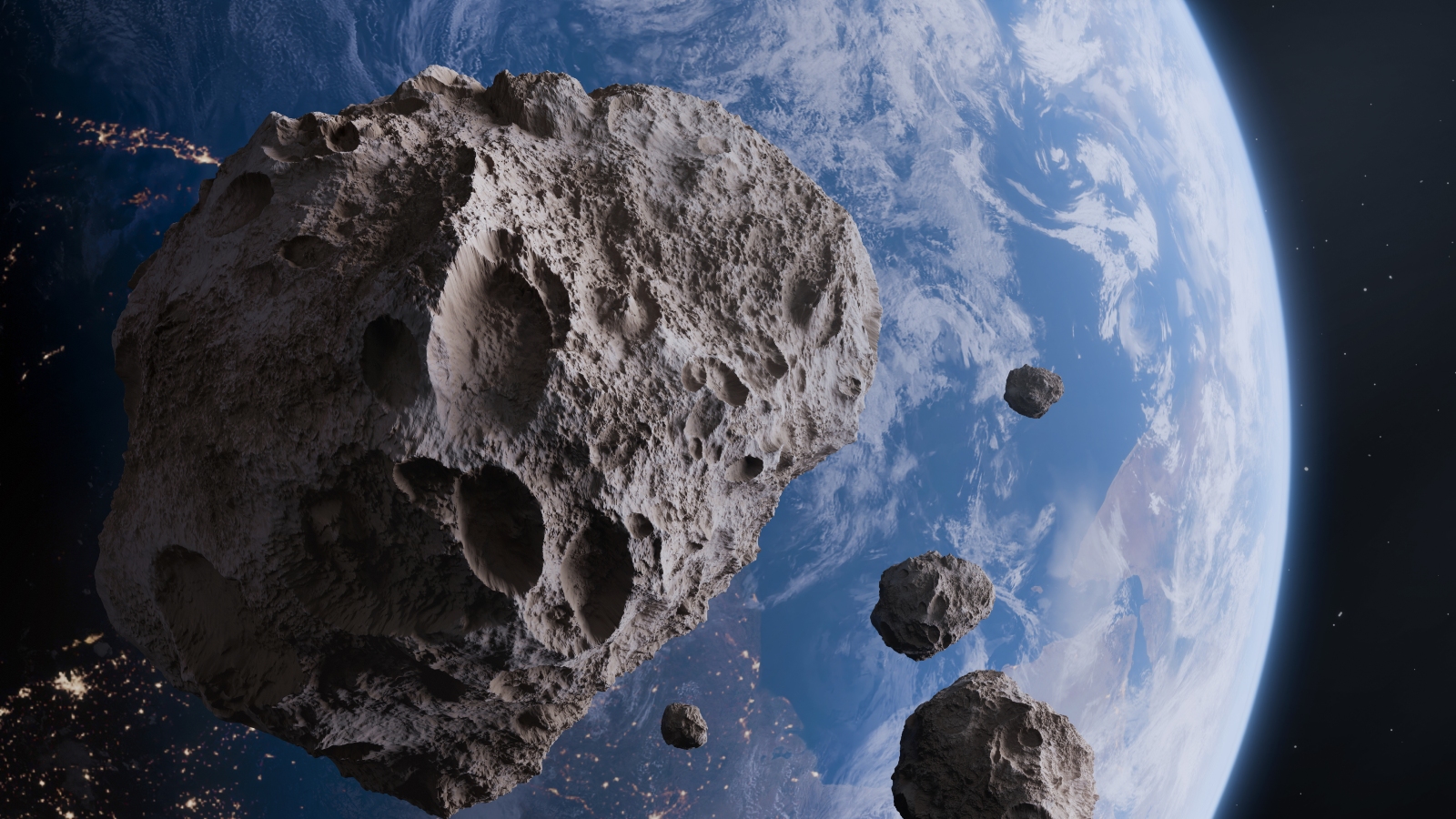- Get link
- X
- Other Apps
An 'invisible threat': Swarm of hidden 'city killer' asteroids around Venus could one day collide with Earth, simulations show - Live Science
- Get link
- X
- Other Apps

An 'Invisible Threat': Swarm of Hidden 'City Killer' Asteroids Around Venus Could One Day Collide With Earth
A potentially concerning, yet not immediate, threat lurks in our solar system. New simulations suggest an unknown number of potential "city-killer" asteroids may be hiding near Venus, posing a future collision risk to Earth. While there's no need to panic, understanding this "invisible threat" is crucial for planetary defense.
These space rocks, known as co-orbital asteroids, orbit the sun alongside Venus, without actually orbiting the planet itself. Think of them as companions sharing the same cosmic highway. Currently, we know of about 20 such co-orbitals around Venus, ranging from Trojan asteroids (fixed points ahead or behind Venus) to a "quasimoon" named Zoozve. Scientists believe these asteroids originated from the main asteroid belt between Mars and Jupiter.
Here's what you need to know:
- Size Matters: All known Venusian co-orbitals are estimated to be wider than 460 feet (140 meters), large enough to be considered "city killers."
- Close Encounters: While these asteroids pose no direct threat from their current positions, a close approach to Earth could disrupt their orbit around Venus, potentially sending them on a collision course with us.
- Venus: A Close Neighbor: Venus is our closest planetary neighbor, coming within approximately 25 million miles (40 million km) of Earth at its nearest point, making its co-orbitals a plausible, albeit long-term, concern.
The Hidden Population
Researchers suspect that more space rocks are hiding near Venus. Almost all of the known co-orbitals have highly elliptical orbits (eccentricities greater than 0.38). This suggests an observational bias; asteroids with more circular orbits are likely obscured by the sun's glare, making them difficult to detect.
Co-orbital asteroids also shift their positions relative to Venus, altering their collision potential with Earth. Research indicates this happens roughly every 12,000 years, a period known as a co-orbital cycle.
Simulations and Potential Threats
A recent study, currently undergoing peer review, explored whether hidden asteroids with less elliptical orbits could threaten Earth. Researchers "cloned" known co-orbitals with lower eccentricities and simulated their behavior over 36,000 years (three co-orbital cycles).
The simulations indicated that some of these newly added co-orbitals could indeed pose a threat to Earth within that timeframe. However, the study doesn't provide concrete probabilities of a future collision. As study lead author Valerio Carruba from São Paulo State University explained, "How many exactly is an open question." It's challenging to predict the actual number of co-orbitals.
Media Sensationalism vs. Scientific Accuracy
Following the study's initial release, some media outlets sensationalized the risk, even suggesting an imminent collision within weeks. However, these claims are unfounded. As Carruba clarified, "None of the current co-orbital objects will impact Earth soon."
While disappointed by the hype, Carruba hopes this attention will spark greater interest in monitoring these "exciting" asteroids more carefully.
The Importance of Monitoring
The researchers emphasize the importance of detecting and monitoring potentially hazardous asteroids, citing the example of asteroid 2024 YR4. Initially, it had a predicted 2.3% chance of hitting Earth in 2032, but the odds were later revised to zero. This highlights the dynamic nature of asteroid trajectories and the need for continuous observation.
New observational tools, like the Vera C. Rubin Observatory in Chile, promise to enhance our ability to detect dangerous space rocks, including Venus's co-orbitals. Some researchers even suggest sending a dedicated telescope to Venus's orbit to specifically search for these elusive objects.
Looking Ahead
While the possibility of a future collision with a Venusian co-orbital asteroid exists, it's not an immediate cause for alarm. "I believe that we should not underestimate their potential danger, but I would not lose sleep over this issue," Carruba stated. As our observational capabilities improve, our understanding of this asteroid population will undoubtedly grow, leading to more accurate risk assessments and potentially, mitigation strategies. For now, continued vigilance and scientific inquiry remain our best defense.
Tags: Asteroids, Venus, City killer, Space rocks, Co-orbital, Earth threat, Simulations, Zoozve, Trojan asteroids, Solar system
Source: https://www.livescience.com/space/asteroids/an-invisible-threat-swarm-of-hidden-city-killer-asteroids-around-venus-could-one-day-collide-with-earth-simulations-show
Asteroids
City killer
Co-orbital
Earth threat
Simulations
solar system
Space rocks
Trojan asteroids
Venus
Zoozve
- Get link
- X
- Other Apps
Comments
Post a Comment